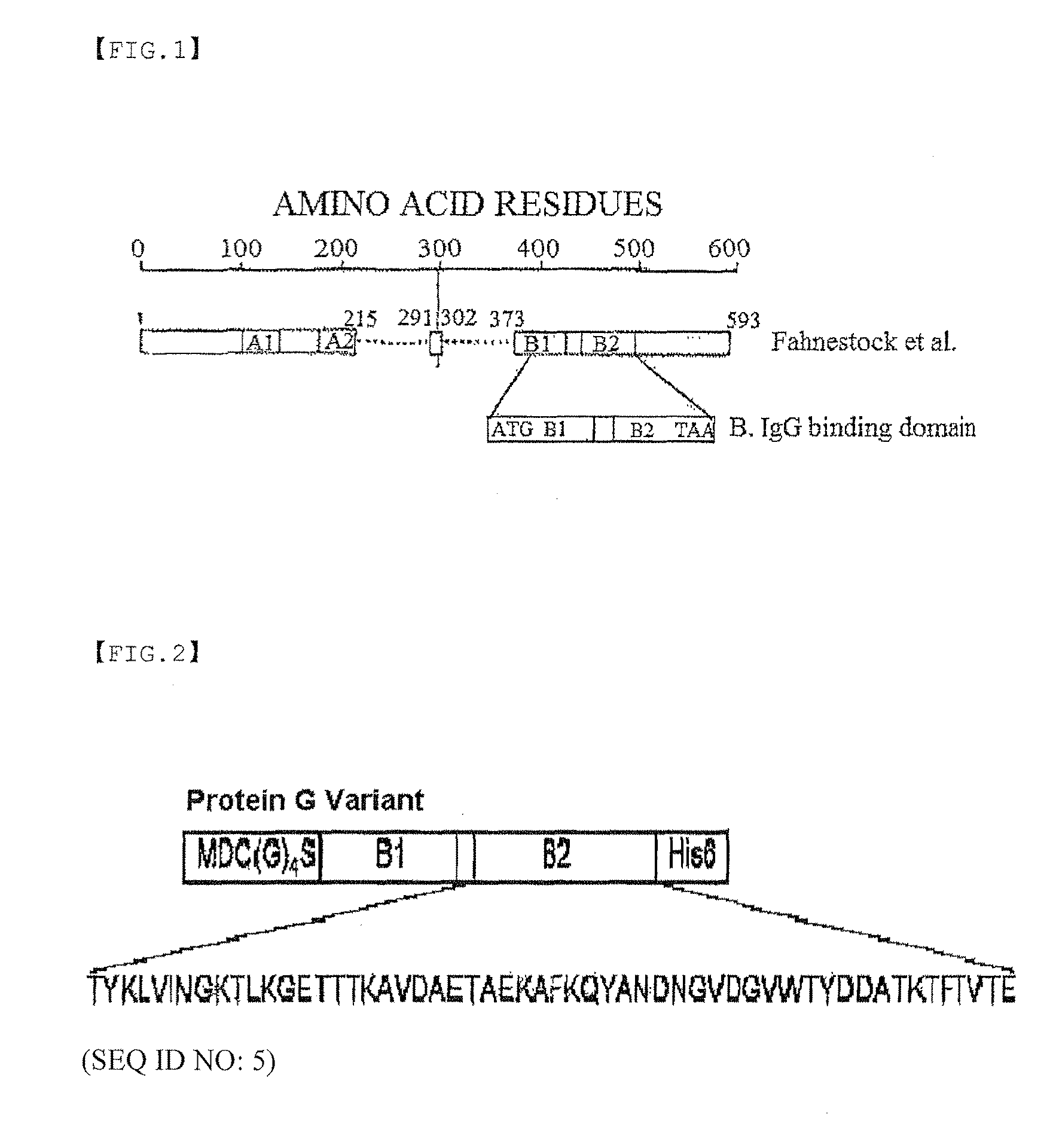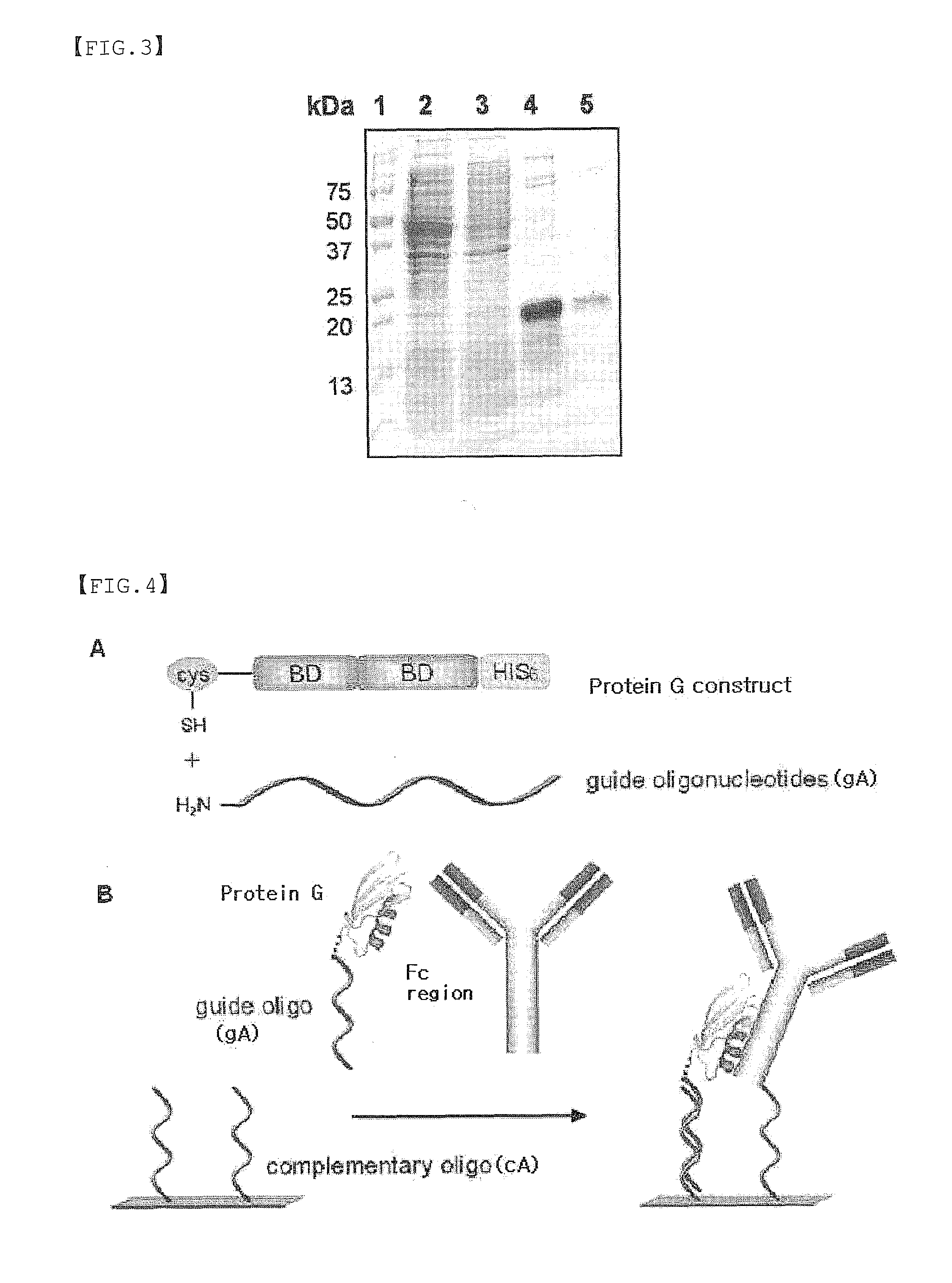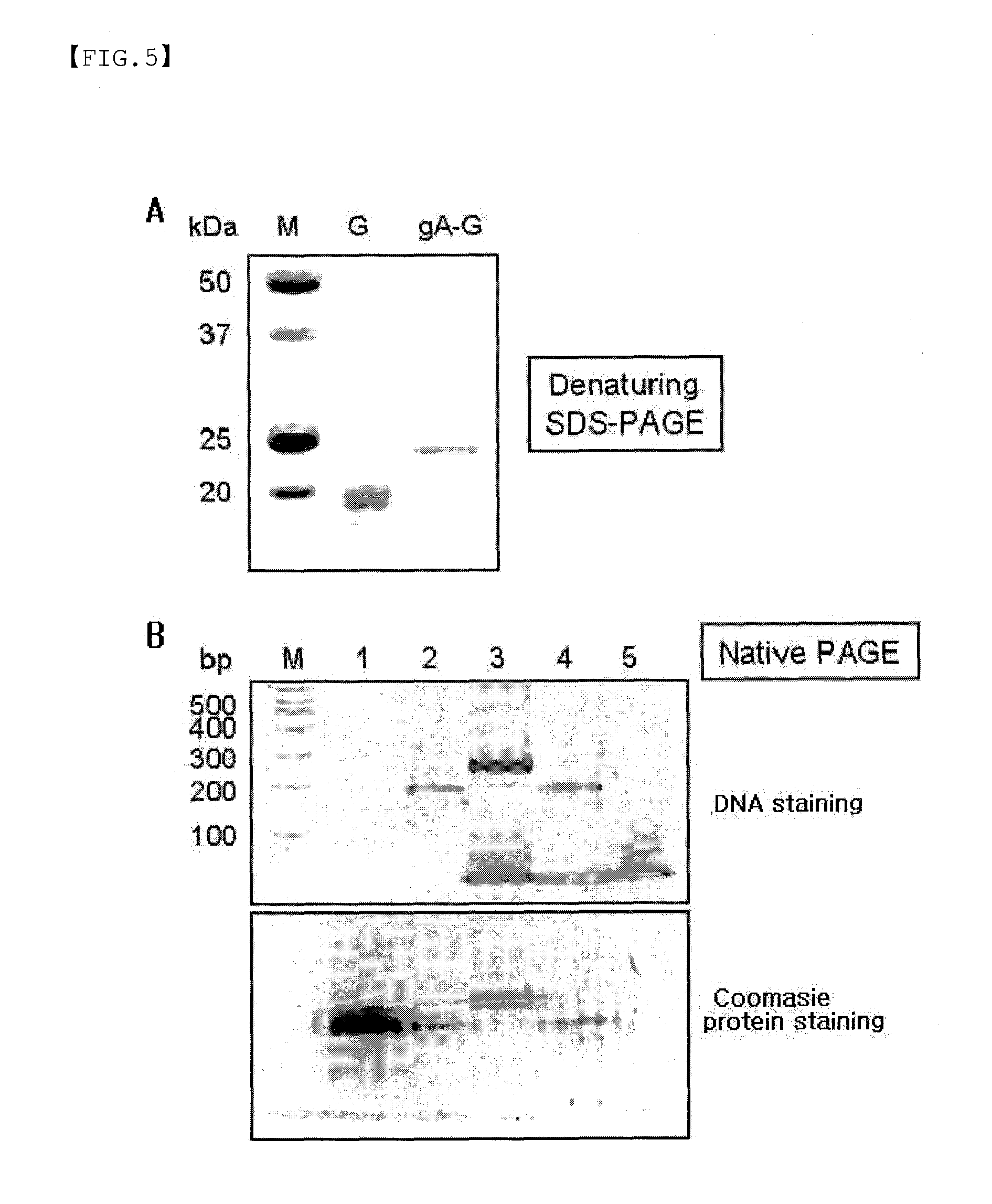Protein G-Oligonucleotide Conjugate
a technology of oligonucleotide and conjugate, which is applied in the field of protein g conjugate, can solve the problems of macromolecules losing orientation and activity to bind to antigens, less reproducibility, and asymmetric antibodies
- Summary
- Abstract
- Description
- Claims
- Application Information
AI Technical Summary
Benefits of technology
Problems solved by technology
Method used
Image
Examples
example 1
Protein Expression Analysis of Cysteine-Tagged Streptococcal Protein G Variant
[0055] Gene Preparation of Cysteine-Tagged Streptococcal Protein G Variant
[0056]Two primers were prepared in order to tag with cysteine at the N-terminus. In the base sequence of the 5′-primer, an initiation codon (ATG) was followed by GAT (Asp codon) and TGC (cysteine codon), and in order to provide a link to protein G, GGC GGC GGC GGC AGC (four Gly codons and one Ser codon) were included. Furthermore, in order to insert the gene into an expression vector pET21a (Novagen), the NdeI restriction site was introduced into the N-terminal primer and the XhoI restriction site was introduced into the C-terminal primer. The Streptococcal genomic gene was obtained, and a polymerase chain reaction (PCR) was performed with the primers. Thus, only the amino acid regions (B1 [a form having 10 initial amino acid residues cleaved], B2), which are known as domains to which an antibody binds, were obtained. The obtained fr...
example 2
Preparation of Protein G Conjugate (gA-G)
[0066]Using Sulfo-SMCC (Sulfosuccinimidyl 4-(N-maleimidomethyl)cyclohexane-1 carboxylate), an oligonucleotide (gA) modified with an amine group and a Streptococcal protein G variant tagged with one cysteine were chemically linked to each other to prepare a protein G conjugate (gA-G).
[0067]In particular, 60 nmol of the oligo DNA (gA) modified with an amine group at 5′-end was dissolved in 400 μl of 0.25 M phosphate buffer, and then reacted with 1.5 mg of Sulfo-SMCC (3400 nmol) dissolved in 75 μl of DMF solution. The mixture was reacted at normal temperature for 1 hr, and then the activated oligo DNA (gA) was separated from the excess unreacted Sulfo-SMCC using a binding buffer (20 mM Tris, 50 mM NaCl, 1 mM EDTA pH7.0) by Sephadex G25 gel filtration. While performing the activation of oligo DNA, the cysteine tagged-protein G variant was reacted with 20 mM DTT for complete reduction, followed by gel filtration to remove DTT. Consequently, the ob...
example 3
Fabrication of Protein G Conjugate (gA-G)-Immobilized Biosensor and Biochip
[0071]The oligo DNA (gA) was chemically linked to the one cysteine-tagged Streptococcal protein G variant, and then reacted with the surface of gold thin film, on which the oligo DNA (cA) complementary to oligo DNA (gA) was linked, to fabricate a protein G conjugate (gA-G)-immobilized biosensor and biochip.
[0072]In particular, the oligo DNA (cA) was reacted with the surface of gold thin film, and then changes in the surface plasmon resonance signal were measured by means of a surface plasmon resonance (SPR)-based biosensor to detect the immobilization reaction of the complementary oligo DNA (gA), protein G conjugate (gA-G), and noncomplementary control oligo DNA (gB) in real-time.
[0073]As a result, when the noncomplementary control oligo DNA (gB) was injected, there was little change in the surface plasmon resonance signal. When the complementary oligo DNA (gA, 7.5 kDa) was injected, the surface plasmon reson...
PUM
| Property | Measurement | Unit |
|---|---|---|
| pH | aaaaa | aaaaa |
| pH | aaaaa | aaaaa |
| length | aaaaa | aaaaa |
Abstract
Description
Claims
Application Information
 Login to View More
Login to View More - R&D
- Intellectual Property
- Life Sciences
- Materials
- Tech Scout
- Unparalleled Data Quality
- Higher Quality Content
- 60% Fewer Hallucinations
Browse by: Latest US Patents, China's latest patents, Technical Efficacy Thesaurus, Application Domain, Technology Topic, Popular Technical Reports.
© 2025 PatSnap. All rights reserved.Legal|Privacy policy|Modern Slavery Act Transparency Statement|Sitemap|About US| Contact US: help@patsnap.com



